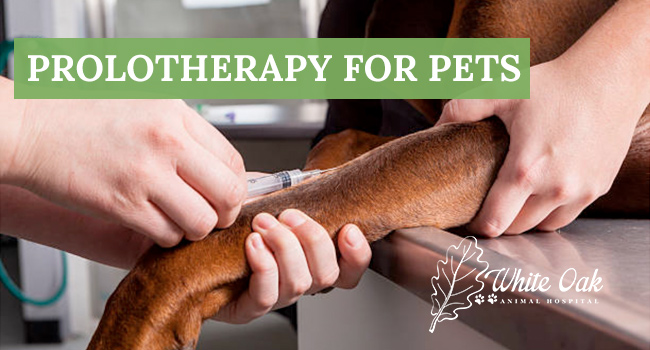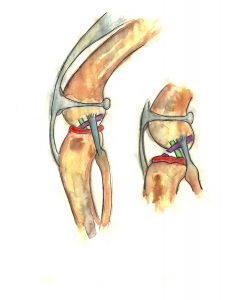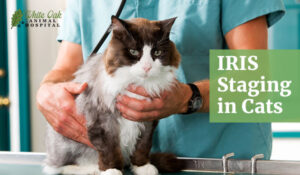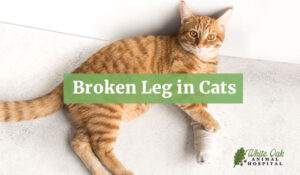
What is Prolotherapy for Pets?
Much like its human counterpart, prolotherapy for pets offers a holistic approach to healing through techniques such as “proliferation therapy” or “regenerative injection therapy.” Administered by Dr. Casey Damron, this procedure entails injecting mild irritants into targeted areas, kickstarting the body’s innate healing response to repair damaged tissues effectively.
Prolotherapy is a valuable orthopedic tool, particularly beneficial for pets grappling with various conditions. Here’s how it can help:
Conditions Prolotherapy Can Help
- Degenerated discs
- Herniated discs
- Neck and back pain
- Degenerative joint disease
- Tendonitis
- Torn tendons, ligaments, and cartilage
How Prolotherapy Benefits Pets
Prolotherapy can address various conditions, providing effective relief and promoting natural healing.
- Promotes Tissue Regeneration: Prolotherapy stimulates the growth of new, healthy tissue fibers, effectively tightening and strengthening weakened areas.
- Alleviates Joint Pain: By addressing underlying issues contributing to joint pain, prolotherapy offers relief and improves mobility, enhancing your pet’s comfort and quality of life.
- Supports Healing of Injuries: Whether it’s a torn tendon, ligament, or cartilage, prolotherapy aids in the healing process, facilitating a quicker recovery and reducing the risk of chronic issues.
- Non-Invasive Alternative: Compared to surgical interventions, prolotherapy provides a non-invasive option for managing various orthopedic conditions, minimizing risks and downtime for your pet.
- Tailored Treatment Approach: Dr. Damron customizes each prolotherapy session to suit your pet’s unique needs, ensuring optimal outcomes and personalized care.
Prolotherapy is a promising solution for pet owners seeking comprehensive care for their furry companions. With its ability to address many conditions and promote natural healing, prolotherapy is a beacon of hope for pets experiencing discomfort and mobility challenges.

How Does It Work?
At its core, prolotherapy harnesses your pet’s innate healing capabilities to foster tissue regeneration in weakened areas. The process entails injecting a gentle irritant directly into the injured area, prompting the body to kickstart the repair process.
As a result, your pet’s system generates a controlled inflammatory response to the irritant, a vital step in stimulating the growth of new, healthy tissue fibers. Over time, this newly formed tissue tightens and heals the weakened area, gradually restoring its strength and function.
Subsequent treatments further reinforce this process, facilitating a steady accumulation of tissue to reinstate the area’s original integrity.
While prolotherapy offers promise for many conditions, it’s essential to note that it may not be suitable for all cases. For instance, prolotherapy is an excellent choice for partial tendon and ligament tears. However, if your pet sustains a complete ligament or tendon tear, surgical intervention often presents a more viable option for optimal recovery.
The History of Prolotherapy
While prolotherapy may seem like a novel approach to medicine, its origins trace back to ancient times, dating as far back as 500 B.C. In those early days, physicians utilized prolotherapy, also known as sclerotherapy, to address various ailments.
For instance, Roman soldiers with shoulder joint dislocations were treated using hot branding irons, which aided in fusing torn ligaments. Fortunately, medical advancements have significantly refined the prolotherapy process since then.
Modern techniques focus on strengthening fibrous tissue and promoting the development of new, healthy collagen, offering a far more gentle approach than the scarring induced by earlier methods.
As a result, pets undergoing prolotherapy experience minimal discomfort. If you’re considering whether prolotherapy could benefit your pet, we’re here to help you explore this option further.
People Also Ask:
What is prolotherapy for pets, and how does it work?
Prolotherapy is a non-surgical treatment that involves injecting a mild irritant solution directly into the injured area of a pet. This solution stimulates the body’s natural healing response, encouraging the growth of new, healthy tissue fibers and promoting the tightening and strengthening of weakened areas.
What conditions can prolotherapy help treat in pets?
Prolotherapy can be beneficial for pets suffering from a range of musculoskeletal conditions, including arthritis, degenerated or herniated discs, neck and back pain, degenerative joint disease, tendonitis, and torn tendons, ligaments, and cartilage.
Is prolotherapy for pets safe?
Yes, prolotherapy is considered safe for pets when performed by a qualified veterinarian experienced in the procedure. The mild irritant solution used in prolotherapy is well-tolerated by most pets and poses minimal risks when administered correctly.
How many prolotherapy treatments will my pet need?
The number of prolotherapy sessions required for your pet will depend on various factors, including the severity of its condition, its response to treatment, and its overall health. Your veterinarian will assess your pet’s progress and determine the appropriate treatment plan, which may involve multiple sessions spaced several weeks apart.
What can I expect during and after my pet’s prolotherapy treatment?
During a prolotherapy session, your pet will receive injections of the irritant solution directly into the affected area. Some pets may experience mild discomfort or swelling at the injection site immediately following the procedure, but this typically resolves within a few days. Over time, you will notice improvements in your pet’s mobility and comfort as the treatment takes effect.
How long does it take for results with prolotherapy for pets?
The timeframe for seeing results from prolotherapy can vary depending on the individual pet and the severity of their condition. Some pets may experience improvements after just one session, while others may require several sessions before noticeable benefits are observed. Your veterinarian will monitor your pet’s progress and adjust the treatment plan to optimize outcomes.
Are there any alternatives to prolotherapy for treating my pet’s condition?
While prolotherapy can be an effective treatment option for many pets, alternative therapies or interventions may be worth considering, depending on your pet’s specific situation. Your veterinarian can discuss the available treatment options, including surgical interventions, physical therapy, medication, and other complementary therapies, to help you make an informed decision about your pet’s care.





